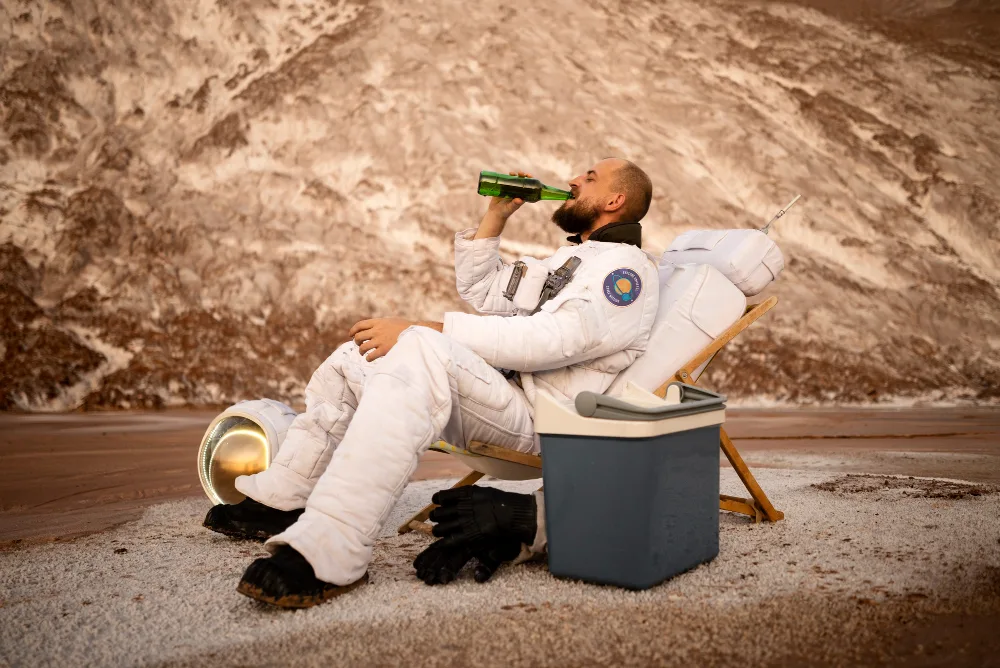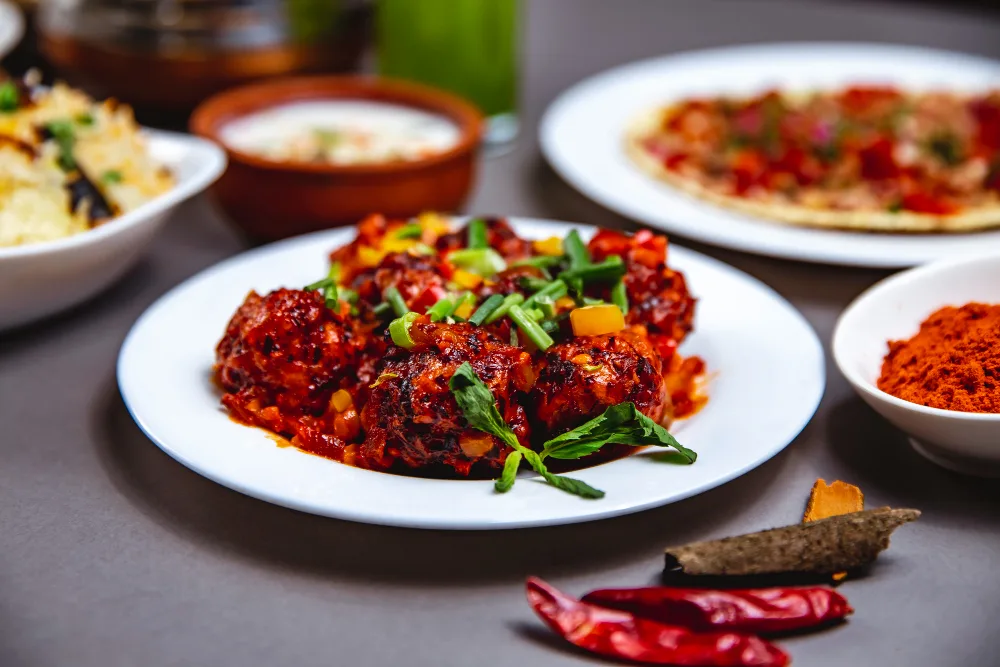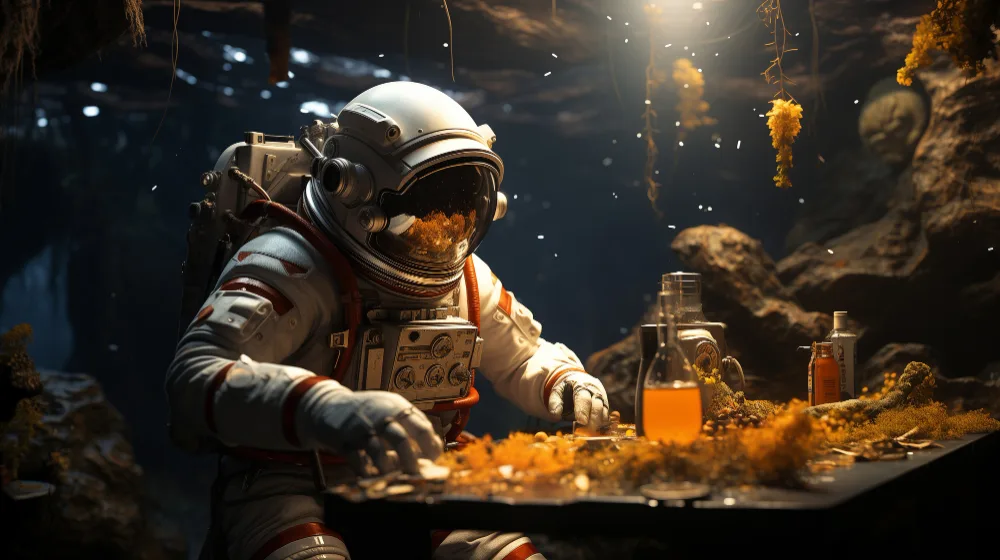Did you know that even something as seemingly simple as food choices plays a crucial role in astronauts’ journeys beyond Earth? In this blog post, we’ll find out 10 foods that are not allowed in space – the items banned for astronauts due to various reasons ranging from practicality to safety. So buckle up and prepare your taste buds for a cosmic culinary adventure!
Introduction
Space is the final frontier, a vast expanse that challenges everything we know about survival. In this realm of zero gravity and limited resources, even something as mundane as food becomes a critical consideration for astronauts embarking on space missions.
Imagine trying to enjoy your favorite snack in a place where crumbs can float freely, posing potential hazards to equipment and air filters. That’s why foods prone to producing crumbs are strictly prohibited in space.
Carbonated drinks may seem refreshing on Earth, but their bubbly nature poses risks of creating gas bubbles inside astronauts’ bodies in microgravity. As a result, carbonated beverages are off-limits during space travel.
Fresh fruits and vegetables are packed with essential nutrients but have short shelf lives and perish quickly without refrigeration. Hence, astronauts rely on specially prepared freeze-dried or thermostabilized versions instead.
Stay tuned as we uncover more fascinating insights into the intriguing world of foods not allowed in space!

1. Crumbs
Crumbs may seem harmless on Earth, but in space, they can wreak havoc. Imagine tiny particles floating around the spacecraft, getting into equipment and electronics – not an ideal situation! Astronauts have to be extra cautious with their food choices to avoid creating a mess of crumbs that could cause issues. That’s why crumbly items like cookies or crackers are off-limits in space missions.
Even simple tasks like eating a snack become more complex without the luxury of gravity to keep crumbs contained. Special packaging and utensils are designed for space meals to minimize the risk of creating debris that could potentially jeopardize the mission. It’s all about adapting to the unique challenges of living and working in a zero-gravity environment – even down to what you eat!
So next time you’re enjoying your favorite crunchy snacks here on Earth, remember that astronauts have to steer clear of crumb-producing foods while exploring beyond our planet.
2. Carbonated drinks
Carbonated drinks are a big no-no for astronauts in space. Imagine popping open a can of soda and having fizz flying everywhere! The microgravity environment makes it impossible to contain those bubbles, leading to a messy situation that nobody wants to deal with in space.
Aside from the mess, carbonated drinks can also cause discomfort for astronauts. In zero gravity, gas bubbles tend to linger in the stomach instead of moving up like on Earth. This can lead to bloating and indigestion, making it an unpleasant experience for anyone trying to enjoy their favorite fizzy drink.
To avoid any potential issues, NASA has banned carbonated beverages from being consumed onboard spacecraft. Instead, astronauts stick to rehydratable drinks like water or specially formulated electrolyte solutions that won’t cause any unwanted surprises in orbit.
So next time you reach for a soda, just remember – it may be out of this world but definitely not suitable for outer space adventures!
3. Fresh fruits and vegetables
Fresh fruits and vegetables are a no-go for astronauts in space. Why, you ask? Well, it’s all about the shelf life. These perishable items can quickly spoil without refrigeration. Imagine your favorite apple turning into a mushy mess floating around the spacecraft – not ideal.
Moreover, the water content in fruits and veggies poses another challenge. In zero gravity, fluids behave differently than on Earth. Juicy strawberries could become messy blobs that escape their intended destination – astronaut mouths!
While we may crave a crisp salad or juicy orange on Earth, space travelers have to rely on processed foods with longer shelf lives to sustain them during their missions.
So next time you enjoy your fresh produce here on Earth, spare a thought for our intrepid astronauts who must make do without these colorful culinary delights while exploring the vast expanse of space.

4. Alcohol
When it comes to space travel, astronauts have to abide by strict rules and regulations – even when it comes to their food and beverage choices. Alcohol is one of the items that are strictly prohibited in space. While enjoying a glass of wine or a cold beer may be common on Earth, the effects of alcohol in microgravity can pose serious risks to the crew and the mission itself.
Alcohol consumption can impair cognitive functions, decision-making abilities, and coordination – factors that are crucial for astronauts living and working in space where precision is key. The last thing you want is an intoxicated astronaut trying to operate complex equipment or conduct important experiments onboard.
Moreover, alcohol dehydrates the body which can further exacerbate health issues in the unique environment of space where access to medical facilities is limited. Therefore, staying sober while soaring among the stars isn’t just a recommendation; it’s a non-negotiable rule for those venturing beyond our atmosphere.
5. Food with strong odour
Imagine floating in the confined space of a spacecraft, surrounded by the same air for days on end. Now, picture opening a package of food with a strong odor that permeates every corner of the capsule. Astronauts have to deal with this reality in space where ventilation is limited and odors linger longer than usual.
Strong-smelling foods like garlic or onions can not only affect the olfactory experience but also impact the overall ambiance within the spacecraft. The last thing astronauts want is to be stuck in close quarters with pungent odors overwhelming their senses.
To maintain harmony and comfort onboard, space agencies enforce strict regulations against foods with strong odors being brought into space. It’s all about ensuring a pleasant and conducive environment for astronauts to live and work in while they’re thousands of miles away from Earth.
6. Glass containers
Glass containers are a big no-no in space for astronauts. Why? Well, imagine being in zero gravity and accidentally dropping a glass jar – the shards floating around could pose serious hazards. Plus, glass is not as durable as other materials commonly used for food storage on spacecraft.
To avoid any potential mishaps, NASA strictly prohibits glass containers onboard. Instead, astronauts use specially designed pouches or containers made of plastic or aluminum which are safer and more practical for space travel.
So next time you pack your lunch for work or school, be grateful that you can still enjoy your meal out of a trusty glass container without worrying about it shattering into tiny dangerous fragments! But remember – when it comes to space travel, safety always comes first.

7. Spicy foods
Spicy foods, with their fiery kick and bold flavors, are a beloved culinary choice for many. However, in the confined space of a spacecraft, these tantalizing treats are strictly off-limits for astronauts. Why? Well, it all comes down to the potential for digestive issues that spicy foods can trigger in zero gravity.
Imagine floating in space while dealing with heartburn or indigestion – not exactly a pleasant thought! Spicy foods can also cause discomfort by increasing body temperature and sweating. In an environment where resources are limited and every aspect of health is crucial, avoiding such complications is essential.
While astronauts may crave that extra punch of heat from hot peppers or spices back on Earth, the risks associated with consuming spicy foods in space simply outweigh the temporary satisfaction they provide. So next time you reach for that bottle of hot sauce, remember: it’s a luxury best enjoyed on solid ground!
8. Food with high moisture content
When it comes to space travel, food with high moisture content is a big no-no for astronauts. Why? Well, in the microgravity environment of space, liquids can easily escape their containers and float around as droplets. Imagine trying to sip soup from a bowl only to have it turn into floating blobs of liquid!
High-moisture foods like soups, stews, or juicy fruits pose a challenge because they can create messes and potentially damage equipment onboard spacecraft. Plus, managing waste water in space is quite complicated without gravity to help with drainage.
Instead of indulging in foods with high moisture content during their missions, astronauts opt for dehydrated meals that they rehydrate using water dispensers on the spacecraft. These meals are not only easier to consume but also help save valuable resources onboard.
So next time you reach for that juicy apple or steaming bowl of soup, remember that in outer space, dry and easy-to-manage foods are the way to go!
9. Food with sharp edges
When it comes to space travel, every detail matters, even the shape of your food. Astronauts are prohibited from bringing foods with sharp edges aboard spacecraft for safety reasons. Imagine trying to enjoy a meal while floating in zero gravity and accidentally bumping into a piece of food that could potentially puncture equipment or injure someone.
To prevent any potential risks, space agencies have strict guidelines on the types of foods allowed in space. Foods like crackers or chips that can easily break into sharp pieces are off-limits for astronauts. Instead, they opt for specially designed pouches and containers that minimize any risk of spills or accidents during meal times.
Even something as seemingly harmless as a carrot stick could pose a danger if not handled carefully in microgravity conditions. So, when it comes to dining in space, smooth and rounded edges are definitely the way to go!
10. Unstable foods
When it comes to space travel, every detail must be carefully considered – even the stability of foods. Astronauts need to avoid foods that can easily crumble or break apart in zero gravity. Imagine trying to eat a snack that disintegrates into crumbs floating around the spacecraft! Not only would this create a mess, but it could also pose a choking hazard.
Unstable foods like crumbling crackers or flaky pastries are definitely off-limits for astronauts. Instead, they opt for stable food options that hold their shape and texture in microgravity environments. This ensures that meals can be consumed safely and efficiently without risking any loose particles drifting off unpredictably.
By excluding unstable foods from their menu, astronauts prioritize safety and practicality during their missions. It’s all about ensuring that every aspect of space travel is meticulously planned and executed with precision – right down to the last bite of food on their plates.
Conclusion
As we wrap up our exploration of foods not allowed in space, it becomes evident that astronauts must adhere to strict guidelines when it comes to their culinary choices. From avoiding crumbs that can float around and damage equipment to steering clear of items like carbonated drinks and glass containers that pose safety risks, every aspect of food selection is carefully considered.
The limitations on fresh fruits and vegetables, alcohol, strong-smelling foods, and high-moisture content options highlight the challenges of consuming a balanced diet in a zero-gravity environment. Spicy foods and those with sharp edges are also off-limits due to potential health concerns and practical considerations.
By understanding the restrictions on unstable foods that could deteriorate quickly or cause contamination, we gain insight into the complexities of meal planning for space missions. While these constraints may seem restrictive, they are essential for ensuring the well-being and efficiency of astronauts during their time in space.
FAQ
Q: Why are certain foods banned for astronauts in space?
A: Certain foods are restricted in space to prevent health risks, ensure food safety, and maintain a clean environment within the spacecraft. Crumbs, strong odors, sharp edges, and high moisture content can all pose challenges in microgravity.
Q: Can astronauts request specific foods that are not on the banned list?
A: Yes, astronauts do have some flexibility in choosing their menu items for long-duration missions. However, these choices must align with nutritional requirements and operational constraints.
Q: How do astronauts cope with limited food options in space?
A: Astronauts undergo extensive training to adapt to the available food choices. They also have access to a variety of packaged meals designed by experts to meet their dietary needs while ensuring compatibility with the space environment.
Q: Are there any exceptions to the banned food list for special occasions or celebrations?
A: In some cases, special treats like fresh fruits may be sent on resupply missions for crew members’ birthdays or holidays. These exceptions are carefully planned to maintain morale and mental well-being during extended missions.
Regardless of these restrictions and guidelines surrounding astronaut diets in space, innovative solutions continue to be developed by scientists and engineers aiming to enhance the culinary experience beyond Earth’s atmosphere.
Related search:
